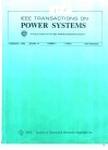版权所有:内蒙古大学图书馆 技术提供:维普资讯• 智图
内蒙古自治区呼和浩特市赛罕区大学西街235号 邮编: 010021

作者机构:Chinese Acad Sci Inst Automat State Key Lab Management & Control Complex Syst Beijing 100190 Peoples R China Univ Chinese Acad Sci Sch Artificial Intelligence Beijing 100190 Peoples R China Univ Bath Dept Elect & Elect Engn Bath BA2 7AY England Beijing Inst Technol Natl Engn Lab Elect Vehicles Beijing 100081 Peoples R China Univ Utah David Eccles Sch Business Salt Lake City UT 84112 USA Sichuan Univ Coll Elect Engn Chengdu 610044 Sichuan Peoples R China
出 版 物:《IEEE TRANSACTIONS ON POWER SYSTEMS》 (IEEE Trans Power Syst)
年 卷 期:2023年第38卷第5期
页 面:4432-4446页
核心收录:
基 金:National Natural Science Foundation of China [72025404, 71621002, 71974187] New Generation Artificial Intelligence Development Plan of China (2015-2030) [2021ZD0111205] Beijing Natural Science Foundation [L192012] Beijing Nova Program [Z201100006820085]
主 题:Carbon reduction energy management renewable energy sources water-energy-carbon nexus system
摘 要:The rapid growth of electric load fuels urbanization but creates unsettling environmental challenges. In that regard, the energy system is a crucial part of consuming water and emitting greenhouse gases. To support reliable and economical energy system operations, with reduced water waste and carbon emissions, we design a viable co-optimization of water-energy-carbon nexus for an integrated energy system by adequately modelling essential interdependencies of power, gas, and water systems. A two-stage distributionally robust optimization method is proposed: the first-stage model minimizes the day-ahead reserve capacity scheduling for the next day, and the second-stage model enables real-time dispatch by considering the variability in renewable power generation. The carbon emissions by power generation and distribution are incorporated in both stages to ensure low-carbon operations. We use a two-stage moment-based distributionally robust approach to capture and represent the uncertainties in renewable generation. Instead of assuming a deterministic distribution, we characterize an ambiguity set with mean vectors and covariance matrices, which produces a family set of distributions. We conduct case studies using a modified IEEE 33-bus power system that includes and links a 20-node gas system and a 10-node water system. The comparative results indicate that the proposed co-optimization of water-energy-carbon nexus is superior than several benchmarks. By considering the close interdependencies of water, energy, and carbon, we create an optimal resource allocation scheme, which is capable of minimizing operation costs, lessening carbon emissions, and reducing water waste. The current research enables effective operation schemes for urban energy systems, illustrates a viable way to curb local environmental emissions, and increases water usage efficiency in the water-energy-carbon nexus.